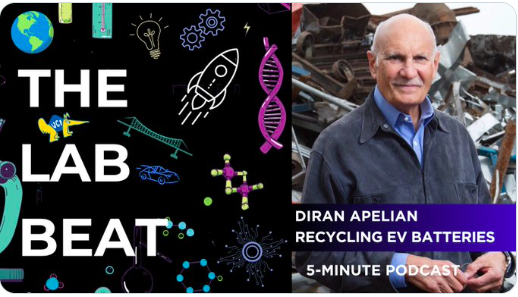Next ACRC Meeting: December 10-11, 2025 UCI Irvine, CA
Welcome to the Advanced Casting Research Center (ACRC)
ACRC is one of the largest industry-university consortia (~ 40 members) in North America dedicated to collaborative research in metal processing and manufacturing. Our focus is metal casting and digital manufacturing. We bring fundamental understanding to existing processes, develop new methods, new alloys, and address management-technology interface issues with our industrial partners. ACRC serves the global metal processing and foundry industry as its educational and research home.
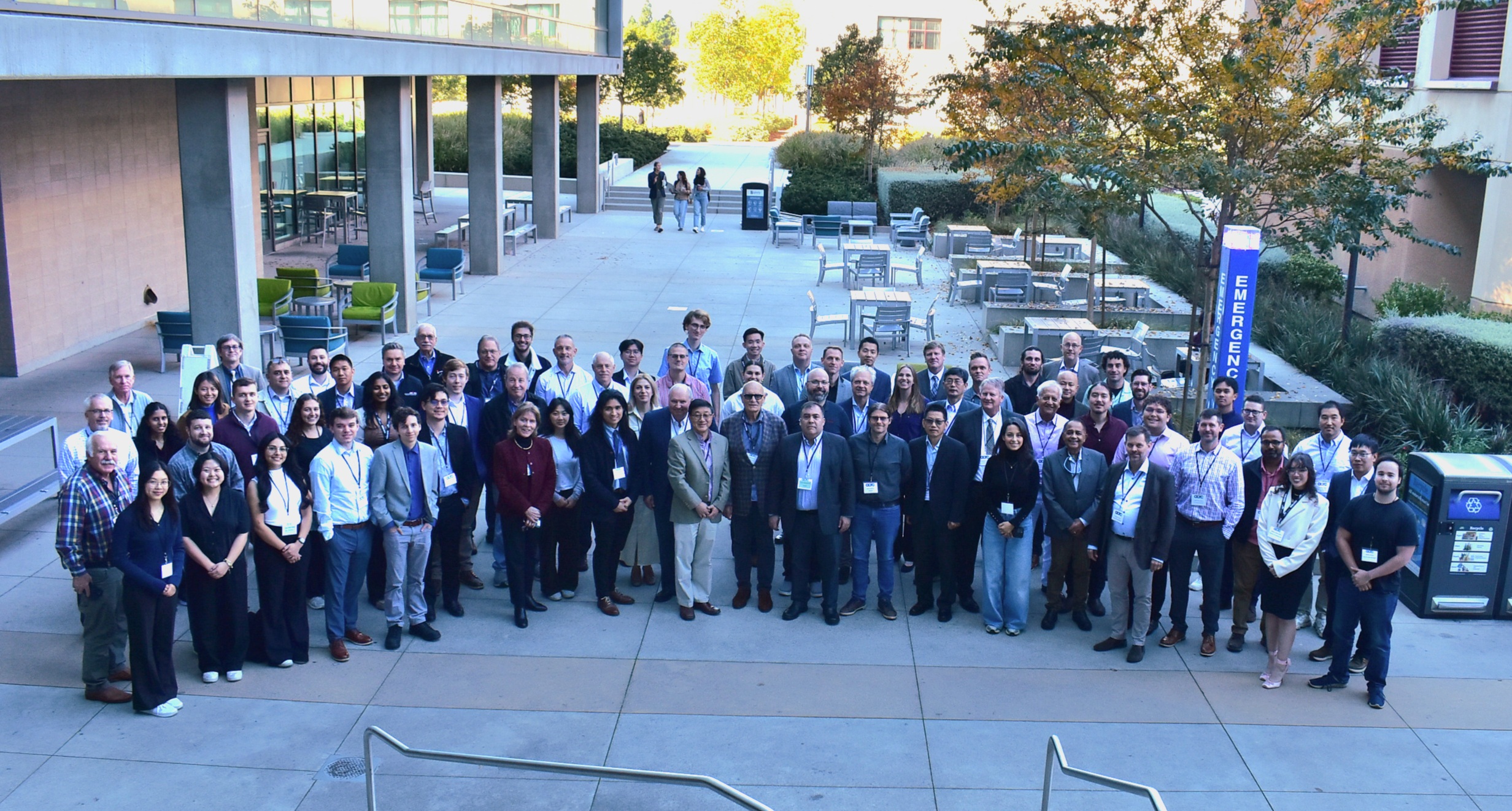
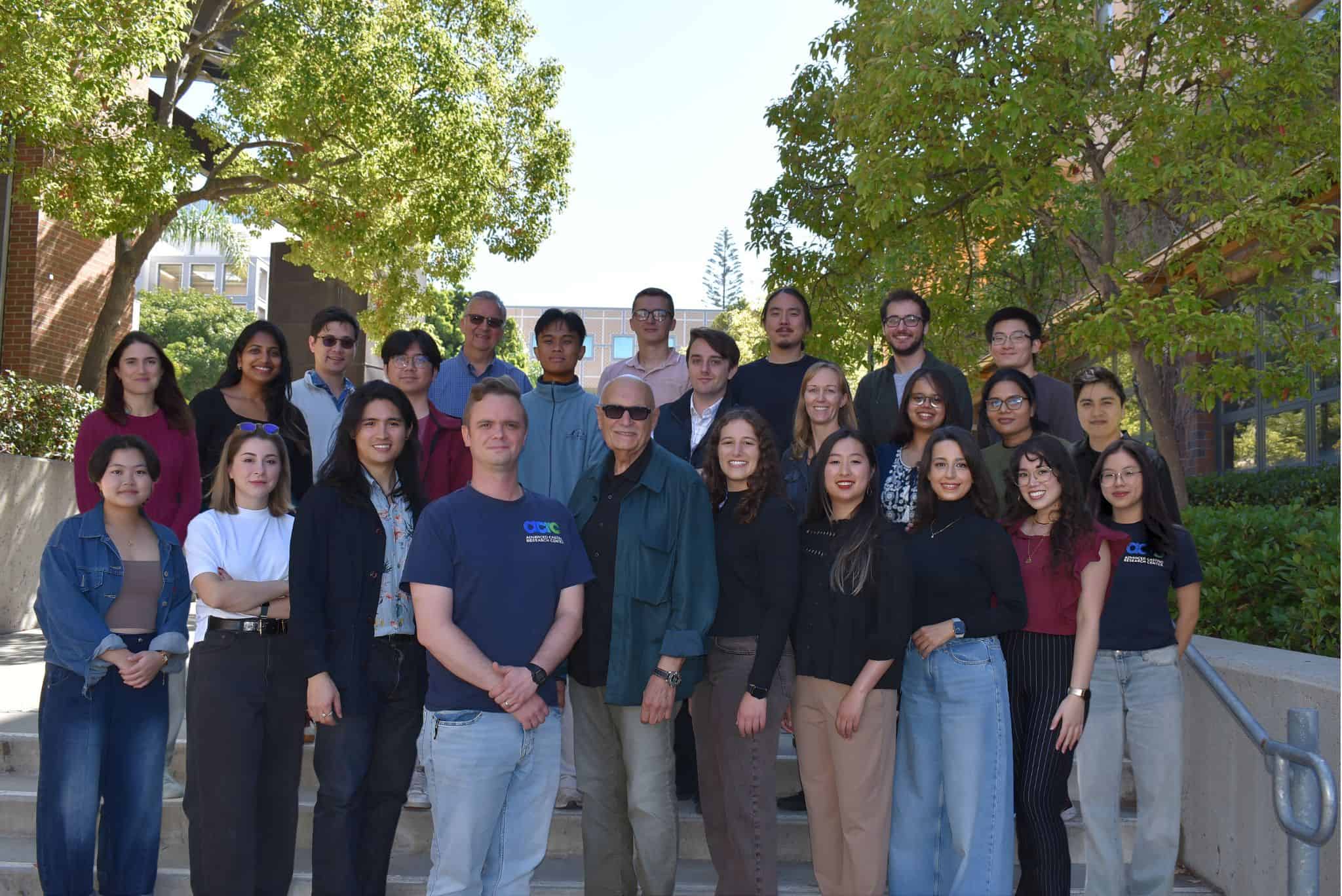
News Feed
Most-Recent E-Blast
- Diran Apelian Upcycles Scrap Metal for Cars and Aerospace
- Meet our Newest Board Members
- Meet our Student Research Team
- Meet our Academic Affiliates
- ESI Group Joins ACRC
- Ohio State Awarded $1 Million for Workforce Development
- Raquel Fierro Jaime Earns AFS Recognition
- AFS Scholarship
- Industry Presenters
- Ascend Elements in TIME Magazine Top 10 Green Companies of 2024
- New Grant Funding: DOE Awards 1.6 Million
- Trane Technologies Joins ACRC
- Pratt & Whitney Launches UCI Center of Excellence
- ACRC and QuesTek Launch Partnership at UCI
- ACRC Visit Audubon Metals
- ACRC and Additive Plus Working Together
- ACRC Student Researchers Win Big at WFO
PRATT & WHITNEY LAUNCHES UCI CENTER OF EXCELLENCE
We are delighted to report that Pratt & Whitney has established a Center of Excellence for Solidification Science at UCI. Diran Apelian will be its inaugural Director, and the team of Carl Soderhjelm, Dan Mumm, Julián Rimoli (of Mechanical engineering) and Lorenzo Valdevit will be the core faculty working on these projects. The Center of Excellence will be a hub with ties to OSU, North Carolina State and North Carolina A&T.

ACRC RESEARCH HIGHLIGHTS
Ultrasonic Processing of Aluminum Alloys
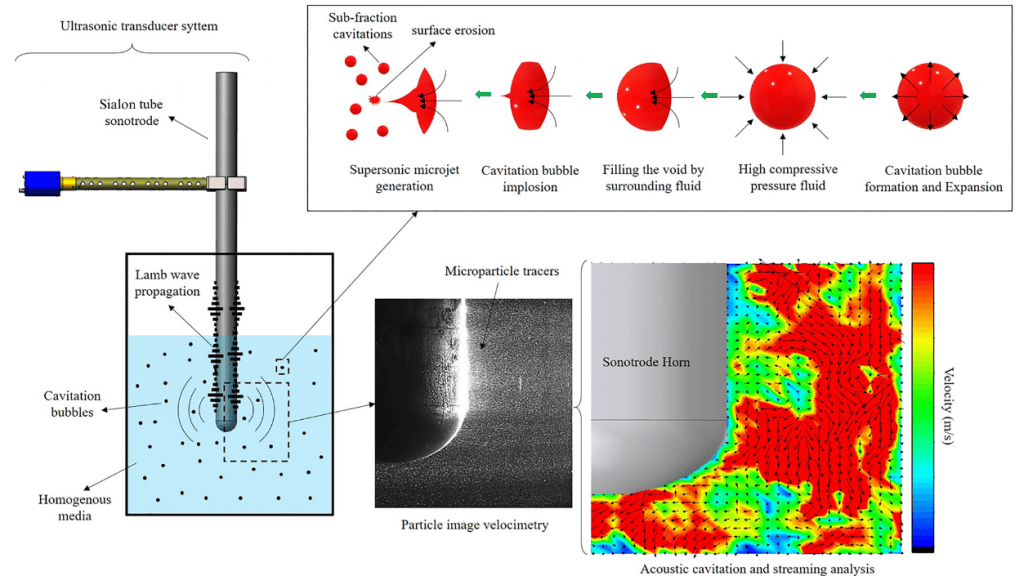
Ultrasonic Treatment (UST) is a novel molten metal processing method that has the potential to perform degassing, grain refinement, and modify intermetallics all in one eco-friendly step. To achieve this goal, the fundamental mechanisms of UST must be researched and developed. The ACRC project on UST is investigating the underlying principles of an innovative multifrequency ultrasonic impartment method and establishing the limiting factors of this processing method in the liquid-state of the metal. Liquid-state UST is a prominent route of exploration to further develop this processing method for many industrial purposes including permanent, gravity casting, sandcasting, launder systems, and high-pressure diecasting. The currently observed benefits of multifrequency UST include the temperatures at which treatment is effective (over 100°C superheat), the volume of metal that can be treated (up to 20 kg compared to 1 kg in traditional fixed frequency), the ability to modify script-like intermetallics into faceted phases, and significant grain refinement (up to 85% reduction in grain size).
HPDC Aluminum Alloy Development for High Conductivity Applications
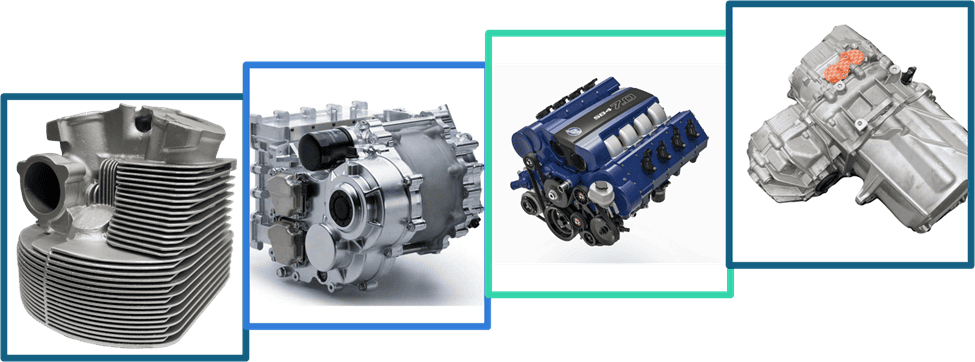
Al-Si cast alloys account for 80~90% of the world’s castings and HPDC specifically accounts for more than ~60% of this subset due to cost competitiveness for mass production. However, the thermal and electrical conductivity properties of Al-Si alloys are only ~50% of pure Al in the as-cast condition, which can only be increased to ~70% with resource-consuming heat treatments. Improving conductivity properties with decent strength can lead to higher performance and/or lifespan for applications such as electric vehicle powertrains, electric motor rotors, internal combustion engines, heat exchangers, etc. Alternative Al eutectic systems such as the Al-Fe, Al-Fe-Ni, Al-Ni, and Al-Ce systems offer pathways to achieve ↑ conductivity & ↑ strength for castable Al alloys. Current research focuses on establishing the significance of intertwined, hierarchical microstructural parameters that govern conductivity, strength, and castability, to provide a foundation for alloy development strategies.
To learn more about the incredible research we are doing at ACRC, click here.
The Lab Beat: Upcycling EV batteries
RECENT PUBLICATIONS
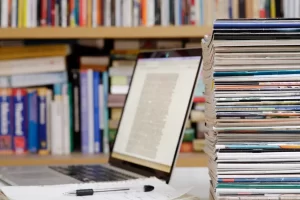
- Eunkyung Lee, Sumanth Shankar, Kentaro Lunn, Diran Apelian, “Residual Stress and Distortion in Cast Components”, in ASM Handbook on Residual Stress (2025)
- J.T. Pürstl, B. Fields P. Ziemke, N.M. della Ventura, K.M. Ainger, D. Apelian, D.S. Gianola, M.R.Begley, L. Valdevit, “Geometry assisted phase selection (GAPS): Interplay of phase heterogeneity and geometry in gyroid shell metamaterials printed with 17-4 PH stainless steel“, Advanced Engineering Materials, February 2025
- Shrivatsav Shankar, Carl Söderhjelm, Diran Apelian, “ Classification of Automotive Aluminum Scrap into Cast and Wrought Alloys via Particle Size Analysis“, Journal of Sustainable Metallurgy
Kentaro F. Lunn1, Diran Apelian, “Thermal and Electrical Conductivity of Aluminum Alloys: fundamentals, structure-property relationships, and pathways to enhance conductivity“, Journal of Materials Sci. & Eng. A (February 2025)
- Cheolmin Ahn, Carl Söderhjelm, Diran Apelian, “Enabling Technologies for Thermal Management During Permanent Mold Casting“, submitted to Journal of Material Processing Technology, December 2024.
- Calvin H. Belcher, Daisy Kamp, Sydney To, Yemao Lu, Delphine Chassaing, Torben Boll, Benjamin E. MacDonald, Elizabeth M. Y. Lee, Diran Apelian, Enrique J. Lavernia, “The origin and control of interstitial impurities in refractory complex concentrated alloys”, Journal of Alloys and Compounds
- Shankar, S., Gois, N., Molstad, E. et al. Upcycling of Low-Quality Aluminum Automotive Scrap: The DNA of Twitch. Inter Metalcast (2024).
- Mahsa Amiri, Kliah N. Soto Leytan, Diran Apelian, Daniel R. Mumm, and Lorenzo Valdevit, “Influence of Particle Size Distribution on Microstructural and Mechanical Features of Cold Sprayed Refractory Metals.” Journal of DOD Research and Engineering, 7, (2), 46-66, Jun 24
- Alan Luo, Diran Apelian, Alan Taub, “Towards Material Circularity and Manufacturing Sustainability in the Automotive Industry”, Journal of Advanced Manufacturing and Processing, 2025; 0:e70017
- Diran Apelian, Emily Molstad, Sean Kelly, Subodh Das, Barbara Reck, Alan Luo, “Sustainable Metal Production and Use in the 21st Century: Challenges and a Path Forward”, The Bridge, NAE, Summer 2024, pp 55-63.
- Mahsa Amiri, Kliah N. Soto Leytan, Diran Apelian, Daniel R. Mumm and Lorenzo Valdevit, “Controlling splat boundary network evolution towards the development of strong and ductile cold sprayed refractory metals: The role of powder characteristics”, Materials Science & Engineering A, V 902, June 2024, 146559
- Ian Geiger, Diran Apelian, Xiaoqing Pan, Penghui Cao, Jian Luo, Timothy J. Rupert, “Delayed metastable-to-equilibrium grain boundary structural transition in NbMoTaW due to chemical ordering and complexity”, Acta Materialia Volume 272, 15 June 2024, 119939
Gianmarco Sahragard-Monfared, Calvin H. Belcher, Sakshi Bajpai, Mark Wirth, Arun Devaraj, Diran Apelian, Enrique J. Lavernia, Robert O. Ritchie, Andrew M. Minor, Jeffery C. Gibeling, Cheng Zhang, and Mingwei Zhang, “Tensile Creep Behavior of the Nb45Ta25Ti15Hf15 Refractory High Entropy Alloy”, Acta Materialia.
- David H. Cook, Punit Kumar, Madelyn I. Payne, Calvin H. Belcher, Pedro Borges, Wenqing Wang, Flynn Walsh, Zehao Li, Arun Devaraj, Mingwei Zhang, Mark Asta, Andrew M. Minor, Enrique J. Lavernia, Diran Apelian, Robert O. Ritchie, “Kink bands enable unprecedented fracture resistance in a refractory high-entropy alloy from cryogenic to high temperatures”, SCIENCE, 11 Apr 2024, Vol 384, Issue 6692, pp. 178-184
Vivek Verma, Calvin H. Belcher, Kaustubh N. Kulkarni, Diran Apelian, EnriqueJ. Lavernia, “Diffusion in High Entropy Alloy Systems – A Review”, Progress in Materials Science, Volume 142, April 2024, 101245
Benjamin E. MacDonald, Stuart Wiesner, Ryan Holdsworth, Carl Söderhjelm, Diran Apelian, “High pressure die casting of Al-Ce-La-Ni-Fe alloys”, International Journal of Metalcasting
- Raquel F. Jaime, Hélder Puga, Miodrag Prokic, Carl Söderhjelm, Diran Apelian, “Fundamentals of Ultrasonic Treatment of Aluminum Alloys”, International Journal of Metalcasting
- Brandon Fields, Mahsa Amiri, Jungyun Lim, Julia T. Pürstl, Matthew R. Begley, Diran Apelian, Lorenzo Valdevit , “Microstructural Control of a Multi-Phase PH Steel Printed with Laser Powder Bed Fusion”, Advanced Materials Technologies, 2024, 2301037
Shiguang Deng, Shirin Hosseinmardi, Diran Apelian, and Ramin Bostanabad,“Physics-Constrained Recurrent Neural Networks for Multiscale Damage Modeling of Metallic Alloys with Process-Induced Porosity“, Computational Mechanics, 74, pp 191-221(2024)
Brandon Fields, Mahsa Amiri, Benjamin E. MacDonald, Julia Pürstl, Chen Dai, Xiaochun Li, Diran Apelian, Lorenzo Valdevit, “ Investigation of an Additively Manufactured Modified Aluminum 7068 Nanostructured Alloy: Processing, Microstructure, and Mechanical Properties”, J Matl Sci & Engineering A 891 (2024) 145901
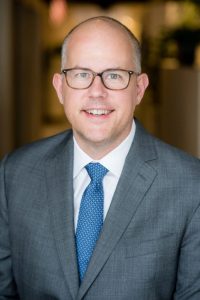
ACRC Board Chair 2024-2025
Jason Sebastian, QuesTek Innovations LLC
“The ACRC is one of the most longstanding and successful industry/university research partnerships in the world, and it brings together researchers and industry in exciting and productive ways. Funding is leveraged to provide members precompetitive access to cutting-edge research & development project results, and access to advanced experimental facilities at UC-Irvine and OSU. Members can select and steer the R&D projects through their active participation in project steering committees and at the ACRC semi-annual in-person meetings. The consortium provides incomparable networking opportunities with top-notch university researchers at UC-Irvine and OSU, and with decision-making executives and managers at high-tech, materials-centric industry member companies. As ACRC Board Chairman, I look forward to helping the ACRC to continue and expand upon its successes in the years to come.”


